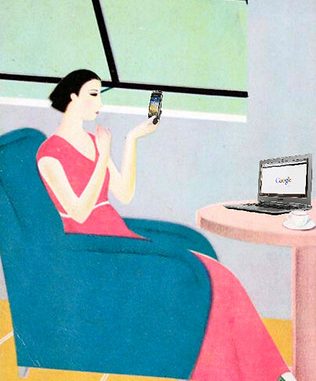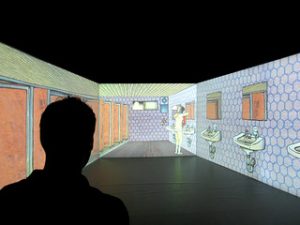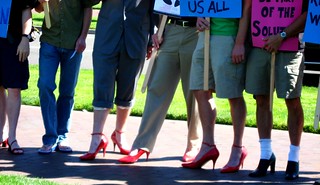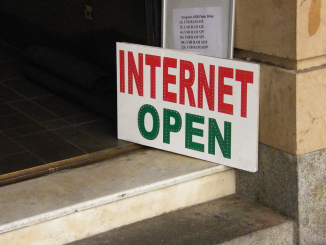
What is structural inequality?
Nuti (2019, p.84) defines structural inequality as groups that suffer specific types of injustice or are systematically disadvantaged. In an unequal social structure, some groups are marginalized, such as blacks and women. With the development of the internet, the traditional ideology of structural inequality has been extended to the internet platform. The new generation has accepted the ideology of structural inequality. This article will discuss structural inequality in new media with the theme of gender. For women and transgender, inequalities are reproduced on the Internet and gender-based cyberspace only “perpetuates and reinforces the current system of heteronormative domination.

The state of internet
A monopoly on search engines and social media is inevitable. The internet is a mirror that reflects the regular dynamics of the masses. Furthermore, Noble(2018) examines the results of search companies’ and advertisers’ ethics regulations often show our lowest and most demeaning role models. Because social media companies and platforms actively decide what racist, sexist and hateful images and content they will host. The degree to which platforms tolerate these behaviors determines the “free speech” and “free expression” of their user base. For example, YouTube delegates the censorship of videos to viewers, allowing for maximum free speech and breeding hate speech and online violence between races and genders. Because people spread it freely, it leads to its normalization.” The commercial nature of the internet makes it more about the balance of profits than moral justice. However, this is inevitable as schools, universities and libraries incorporate multimedia products into our educational experience.
 “male gaze” by istolethetv is licensed under CC BY 2.0“
“male gaze” by istolethetv is licensed under CC BY 2.0“
Why women can not?
With the development of the internet. As gatekeepers, media platforms have the power to choose the type of beauty to be portrayed in order to serve expected and universal cultural standards and are critical in shaping ideology. However, social systems based on male dominance have led to the marginalization of specific groups of people, especially women. Male-dominated social models shape passive images of women on the internet. In the case of the “male gaze,” images of women are often “constructed for the viewing of the male subject,” which depicts the objectification of women in this way.” Hovater and Farris(2020) discover women are portrayed in a completely different way than men – not because women are different from men – but because the “ideal” viewer is always assumed to be male. The image of women is meant to please him. Previous representations of the male gaze continue to be applied to women in the form of advertising and media, especially on the internet. The result is that pornography is structural gender inequality.
Young generation nursing by internet
Due to the youthfulness of the audience, the young generation has varying degrees of regard for gender norms and perpetuates these norms among their peers. This is because young minds are often filtered and process information from multiple media sources. Perloff (2014) finds in Western societies, the ideal of the “perfect body” and the standards of body image begins at a young age for girls. From exposure to the heavily disseminated images of Barbie dolls at an early age which reinforcing femininity. And then shifting “cultural icons of female beauty” to viewing television ads and shows celebrating ultra-thin models, culminating in early adolescence and adulthood with appearance-centric Facebook conversations, photo sharing, and fashion-centric tweeting. Contemporary mass media and social media are important references. When a girl or woman compares her body to the bodies reported in the media, women almost always desire the ideal body. Often, failure to meet these expectations of the ideal body shape can lead to a woman feeling dissatisfied with her own body.
Kate Moss —“Nothing tastes as good as skinny feels”
Male-dominated social norms make women the objects of male gaze. The new generation internalizes this gender inequality through multiple media, and structural inequalities in social networks have a more significant impact on women. In particular(Perloff, 2014), the internalization of thin idealized female beauty is a key element of culturally stereotyped beauty standards that are ubiquitous (Hovater & Farris, 2020). For example, in music videos, “ideal” or “ideal” women tend to have body types characterized by tiny waists, and girls observe “ideal body types” and often compare themselves to the ideal body. This has led to a phenomenon known as objectified body consciousness. For these women, the Internet creates a perfect body model, bringing the female viewer as close to this “model” as possible. In conclusion, The classification of a modern woman’s perfect body is not only based on health standards but the model of a perfect body internalized by social media.
Not only does the objectification of girls and women in music videos distort viewers’ perceptions of women, but these music videos also contribute to the creation of a fantasy world in which men are free to grope, grab, and harass women. The cues in this fantasy scenario may lead men to believe that the sexual harassment described above will be enjoyable for women. This leads to the perpetuation of female representation and their treatment in the larger society.
Gender-based cyberviolence
Cyberspace is also used to disseminate unequal social norms because internet users are not only recipients of content but also transmitters. Mainstream culture defines masculinity as brave and adventurous, while femininity is presented as introverted(Bramesfeld, 2016). On social media, those who are perceived as deviating from gender expectations are easily “sanctioned.” They disproportionately target those perceived to be far removed from the idealized form of masculinity or femininity. Perloff (2014, p.370) finds when boys post pictures of their bare breasts, girls apparently comment, “You look good.” However, when a girl posts a picture by wearing a bathing suit or tank top, everyone comments “Look at that slut.” While both boys and girls are expected to display their attractiveness on the internet, the expectations for girls are more difficult to meet. Thus, the possibility of vilifying images of girls makes sense only based on cross-cultural and historical assumptions that girls’ bodies are intended for the private consumption of boys and men.

“Men in heels” by Lisa Norwood is licensed under CC BY 2.0
What we can do?
The development of the internet also provides a space for free speech that promotes a different social scenario than heterosexuality. On the internet, girls are allowed to experiment with alternative social positions. They are freer to violate feminine and sexually feminine norms, or seek out community and like-minded individuals, as well as engage in sexual connections while avoiding gendered explorations in face-to-face contacts. Likewise, boys can choose to engage in anti-sexism or begin romantic relationships under the steady gaze of their peers. These are behaviors that would be too costly to act on in real life and are tolerated in cyberspace(Richard, 2020). Thus the growth of the internet has made it possible for adults and peers to be quicker to denounce this unequal gender order.
In general, gender is not who we are; it is what we make of it. After the nature of social constructivism, which portrays women and girls as objects of the male gaze and evaluates them according to their physical characteristics, resulting in women still experiencing inequality of rights. So from authoritarian rule to democracies, women remain marginalized in society despite advances in technology.
References :
Bramesfeld, K. D., & Good, A. (2016). C’est La Vie! The Game of Social Life: Using an Intersectionality Approach to Teach About Privilege and Structural Inequality. Teaching of Psychology, 43(4), 294–304. https://doi.org/10.1177/0098628316662758
Hovater, R. S., & Farris, D. N. (2020). Back That Sexism Up: An Analysis of the Representation of Women’s Bodies in Music Videos. In Gender, Sexuality and Race in the Digital Age (pp. 75–97). Springer International Publishing. https://doi.org/10.1007/978-3-030-29855-5_5
Noble, S. U. (2018). Algorithms of oppression : How search engines reinforce racism. ProQuest Ebook Central https://ebookcentral-proquest-com.ezproxy.library.sydney.edu.au
Nuti, A. (2019). Defining Women as a Group. In Injustice and the Reproduction of History (pp. 82–104). https://doi.org/10.1017/9781108325592.005
Perloff, R. M. (2014). Social Media Effects on Young Women’s Body Image Concerns: Theoretical Perspectives and an Agenda for Research. Sex Roles, 71(11), 363–377. https://doi.org/10.1007/s11199-014-0384-6
Richard, G., & Couchot-Schiex, S. (2020). Cybersexism: How Gender and Sexuality Are at Play in Cyberspace. In Gender, Sexuality and Race in the Digital Age (pp. 17–30). Springer International Publishing. https://doi.org/10.1007/978-3-030-29855-5_2


